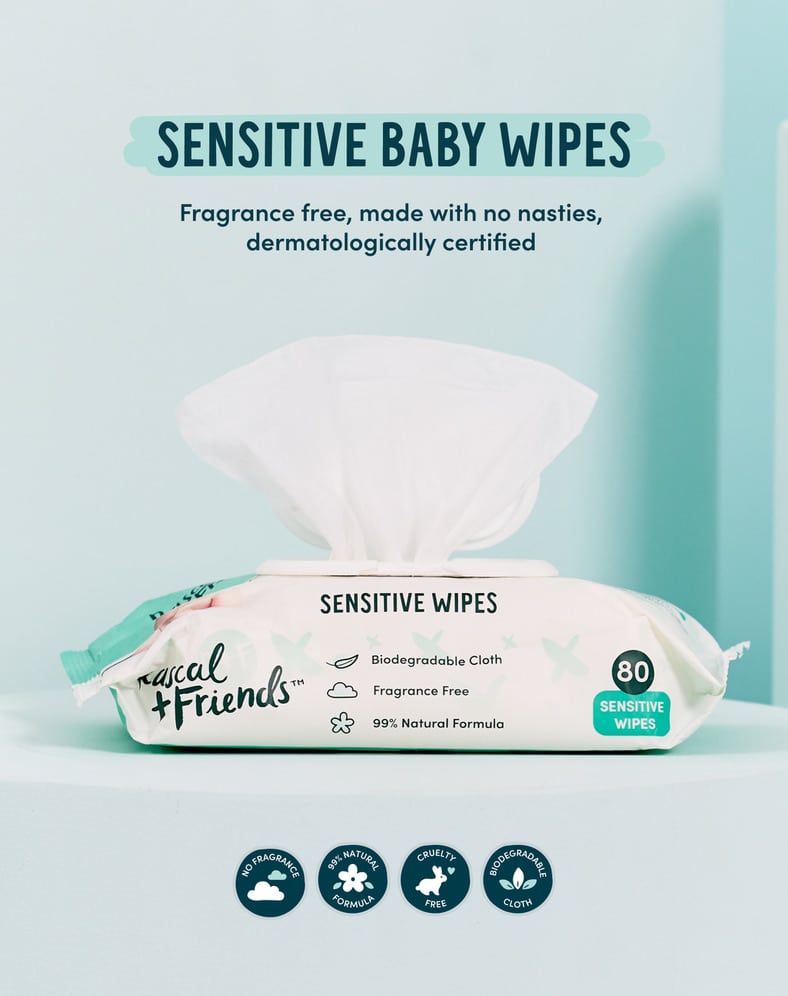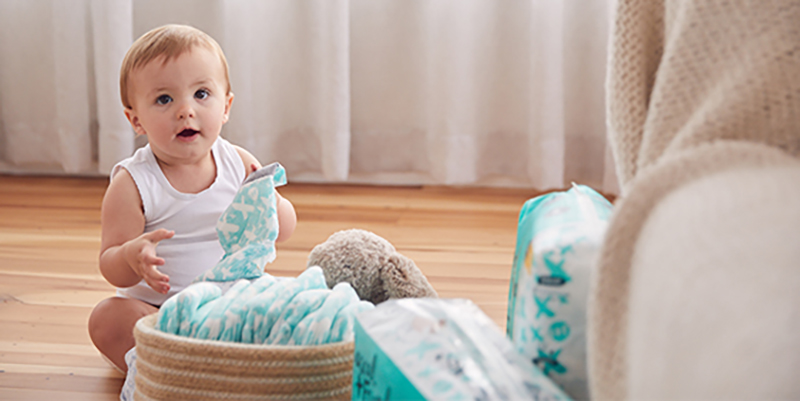How to start potty training your toddler
Everything you need to know about potty training your toddler, how to get started and make change-time easier!
Read MoreA home filled with dogs and babies is perhaps the best kind, though it may be a bit chaotic and drool-filled in the beginning. Some new parents stress that their first-born furbabies might not take kindly to their new addition. If you’re feeling worried about introducing your baby to your pet, don’t be! We’ve dug far and wide to find some of the best tips to keep in mind before and after you bring your newborn home.
This article will cover:
Tips for preparing your pet for the baby’s arrival
How to introduce your newborn and furbaby
The home is your pet’s territory. Some animals are more protective than others and it’s important to prepare them to share their space with a new wiggly rascal. Plan and decide the boundaries for your pets and safeguard the “baby areas” from your furbabies. Train your pets at a slow pace so that they can easily adapt to the new changes. Also, make sure you have a separate area for your pets or a baby-free zone. Especially for older animals, having their own space to destress can make the transition easier on the entire family.
They can retreat to this “pet cave” if they need some alone time. If your little furball is known to be the best dog with babies, then it’s okay to relax these boundaries to some extent, but we recommend waiting a few months after the baby is home before testing these limits. Some animal temperaments can shift with the new sights and sounds of a screaming baby in the home. Which brings us to our next important tip!
The next step in preparing pets for baby is to let them get used to the scent of your rascal by introducing them to your baby’s detergent, lotion, soaps, and other products with a distinct scent. This will help your pets to familiarize themselves with the scent of the new member easily. It will also let you know in advance if there are any scents that your pet has an extreme response to. Does a particular detergent have your puppy sniffing excessively? You may want to avoid choosing any brands that elicit these reactions from your pets, as it may become a problem after bringing your new addition home.
Dogs and cats have much more sensitive hearing than humans allowing them to pick up sounds four times farther away than we can. What may be an adorable baby coo to us can become a nuisance to your little furbaby. Ease your pet into the new sounds of the house by playing a recording of a crying baby in front of your cats or dogs. To help them learn quickly, provide them with some delicious treats so that they associate the sounds with positive rewards.
Little hands can also be irritating for animals especially as rascals are learning to be gentle with our furry friends. Allow your pets to interact freely with friends’ children with care. Take your pets on a walk to a nearby park where children will happily play with your pets. This will help your dog get comfortable around kids.


In the first few days, you’ll have quite a few hospital blankets on hand. Share one of these used blankets with your pet so that they can interact with the smell of your baby while you hold your little one. Let your pet be free to interact with these items so that they can make themselves comfortable first and then introduce them to the real thing.
While introducing your dogs and babies to eachother, ensure that there are at least two adults around them when they are interacting. One person should hold the baby with care, as the other holds your pet and comforts it. Don’t let their mouth get too close to your baby’s face in the first few interactions. Be cautious and watch your pets body language. If they start getting too excited, give your pet a break. It’s okay to take it slow.
First impressions aren’t always the way we plan. Never punish your pets for growling, snarling, or hissing – these are their ways of letting you know that they’re uncomfortable. Preparing pets for baby is all about patience. Take a break for a while, let your pet calm down, and then try to reintroduce them to your little one. Negative reinforcement can cause resentment. Just like introducing a baby to its siblings, the two need to learn to live together harmoniously and form a loving bond.
Once the newness wears off, your pet should start to get used to having your baby in the home. Don’t let your guard down just yet. Even if your furbaby is the best dog with babies and has had some time to adjust, ensure that they don’t have direct access to your new arrival. The first few weeks can be a time of apprehension and adjustments for the entire family; you don’t know how your pet actually feels and they may start to miss your usual schedule together.
Let your baby and your pet have their free time while also involving them in any family activities. Do your best to keep your pet’s schedule like taking walks together or playtime. Being able to add your new baby to familiar habits will make your furbaby more welcoming to the new family member. However, keep your pet and baby separate during feeding time when your pet is most territorial. Even if they are comfortable with the baby, if it comes near their food dish, they may act out of character and it could get messy quickly!
Pets are a dear part of any home. As your family grows, you hope that each member will get along harmoniously. Your pet can be your child’s best friend and those first few months can set the tone of the rest of their relationship. Incorporating these tips will help your furry friends and your wriggly rascal get a good start.

We’d love to stay in touch! Receive email updates about Rascal + Friends products, offers, blog articles and events. Unsubscribe anytime.
| Premium Original Nappy | Premium Eco Nappy |
|---|---|
| Gentle and absorbent topsheet | Gentle and absorbent plant-based topsheet |
| Non-woven fabric wrapped core | Sustainable tissue wrapped core |
| Water resistant and breathable film | Plant-based, water resistant and breathable biofilm |
| Soft and breathable backsheet | Soft and breathable plant-based backsheet |
| Soft recyclable packaging | Home/commercially compostable packaging |
| 3D core containing sustainable pulp | Core containing sustainable pulp |
| Double leak guards | ✓ |
| Soft leg cuffs for a comfortable fit | ✓ |
| No lotions, fragrance or latex | ✓ |
| Highback Waistband | ✓ |
| Custom designed grip tabs | ✓ |
| Up to 12 hours leakage protection* | ✓ |
*Hours may vary according to individual baby’s urine amount